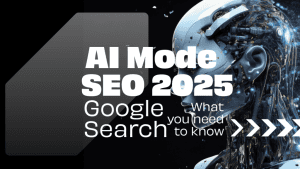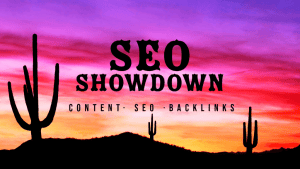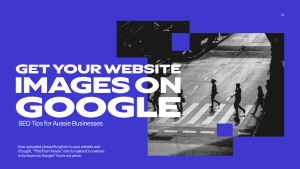Are geo strategies replacing seo in Ballarat
No. Ballarat’s business scene is booming, but the way we search for some Businesses is also changing. And Traditional SEO has evolved to search everywhere optimization.
Local service providers, tradies, wellness clinics, and even accountants are all chasing the same pool of local customers.
Add to that:
- AI Platforms like ChatGPT and Gemini now answer questions without showing a list of websites.
- Google’s AI Overviews are starting to roll out in Australia.
- And big-city agencies are eyeing regional markets.
And for the record… search engine optimization is still alive.
Businesses that rely heavily on their Google Business Profile and the Map Pack for enquiries or traffic probably have a little more time to adapt (for now). Those listings still dominate how locals find services like plumbers, hairdressers, or mechanics. People are not turning to AI Search when they need a plumber in an emergency. They are still likely heading to google.
But for professional services, and product based businesses, where customers like to do a bit of research first the shift to AI Search and generative AI is here. If your content isn’t structured for AI, even strong “Traditional SEO” may not be enough to keep you visible.
Who in Ballarat Should Care About SEO and GEO
| Type of Business | Why SEO Still Matters | Why GEO Is Now Critical |
|---|---|---|
| New Startups (e.g., consultants, home service pros) | Helps you appear on Google and Maps, even with a new domain. | Levels the playing field fast you can get mentioned by AI even before you have backlinks. |
| High-Competition Trades, Health\Wellness Services (e.g., plumbers, beauty salons, massage therapists) | Needed for Map Pack rankings and call-to-action clicks. | Protects visibility as people use voice and AI Chat to find, compare and choose a service and provider |
| Regional Businesses Expanding Nationally (e.g. regional manufacturers, eCommerce) | Builds rankings for product/service keywords nationwide. | Positions you as a trusted authority when AI summarises or cites sources. |
GEO and SEO work together for First Adopter New Business
When Guerrilla Steel launched its horse stable website back in February 2025, it was starting completely fresh, no backlinks and a brand-new domain.
By combining strong search engine optimization foundations with GEO-structured content, we helped them gain visibility in Google’s AI Overviews within the first month, well before running any ads or link campaigns.
Just 90 days later, national brands were bidding on their name in Google Ads, trying to capture the same traffic. Guerrilla Steel has since expanded its team, taken on two new staff, and extended delivery timeframes to keep up with demand.
That’s the power of first-mover advantage in a regional market.
The Risk of Ignoring ai overviews and AI systems for Search
Many of your local competitors will still be relying on the longevity of Organic Search Strategies long histories, lots of backlinks, and standard blog content.
That still works fine – for now – but things are changing.
Google is now leaning on AI-driven summaries and “Brand voice” results – and “Keyword” and Backlink signals are no longer enough.
If you’re not creating structured, fact-based content that AI can understand and backing it up with a good digital PR campaign you’re giving your handing over your customers to your competitors.
GEO vs SEO vs AEO digital marketing
| Term | Core Focus | What It Does |
| Search Engine Optimisation | Helps your website rank higher in traditional Google search results. | Optimises content, speed, structure, and backlinks to improve your visibility when people search on Google or Bing. |
| Generative Engine Optimisation (also called Generative Search Optimisation) | Ensures your content is recognised, trusted, and cited by GEO tools (like Google’s AI Overviews, ChatGPT, Gemini, and Perplexity). | Focuses on factual, structured content with strong entity relationships, local context, and brand authority so AI assistants mention your business in answers. |
| Answer Engine Optimisation | Prepares content to appear directly in featured snippets, voice search, and AI chat results. | Uses question-based formatting (“What is…”, “How much does…”) and structured data (FAQ, HowTo schema) to make it easy for search engines and AI to extract clear, authoritative answers. |
People will start learning about your business through AI chat tools before they even reach your website. By the time they do land on your site, they’re already 60–80% closer to being ready to buy.
| SEO | AEO | GEO |
| SEO gets you found.(Your foundation: speed, structure, keywords, links.) | AEO gets you quoted.(You become the direct answer to a user’s question.) | GEO gets you recommended.(You show up in AI chat tools and generative summaries.) |
| Google’s language (keywords, links, rankings) | AI and voice search language (clear, concise answers) | Machine understanding language (facts, brand trust, structured data) |
| SEO makes sure your website ranks on Google for “custom horse stables Victoria.” | AEO ensures one of your FAQ posts shows up as a featured snippet or voice answer. | GEO ensures AI tools like ChatGPT and Gemini mention your brand (“Guerilla Steel”) as an authoritative example in their generative responses. |
That means your website has two jobs now:
- Feed the AI engine with enough structured, fact-based, trustworthy content to help potential customers discover you during their research phase.
- Be ready for “ready-to-buy” visitors – those who’ve already compared you in AI chat and are now looking for clear pricing, proof, and next steps.
How Ballarat Businesses Can Use use generative ai and local SEO Together
Here’s how to build a simple, modern seo content strategy that works in today’s search world:
1. Get Your technical seo Basics Right
Where to place your seo efforts? Make sure your website loads quickly, works well on phones, and includes clear local keywords.
Continue to optimize content – Think: “Bookkeeping Services Ballarat” or “Massage Therapy Daylesford.”
These small changes help Google figure out who you are and where you work.
2. Add AI Search and generative engine optimization
Write short, helpful pieces that answer real questions that people have, such as:
- “How much does it cost to file taxes in Ballarat?”
- “How much does it cost to build a horse stable in Victoria?”
Make sure to use bullet points, short paragraphs, and your name or the name of your business.
That builds trust and makes it easy for AI tools to link to your content.
3. visibility Your Business or Brand in Both Search and AI Chat
Check how well your website ranks in Google Search Console and also look at the AI search results.
Your GEO work is doing its job if you see your content in Google’s AI Overviews or chatbot answers. GEO strategies are not replacing seo – geo and seo work together.
A 3-Month generative ai Action Plan for Businesses in Ballarat
| Month | Focus | What To Do |
|---|---|---|
| Month 1 | Local SEO Refresh | Use Ballarat keywords to improve your service pages, update your Google Business Profile, and add Local Schema. |
| Month 2 | GEO Content Creation | Write three to four blog posts in the style of frequently asked questions (FAQs). Include your brand and your skills. Put quotes from reviews on your service pages. PR in the digital age. |
| Month 3 | Measure + Refine | Keep an eye on AI visibility and rankings. Change the structure to make it clearer and more accurate. |
Optimize for ai-driven search and traditional seo in Ballarat
Ballarat’s market is still early in the AI-search shift and that’s a gift.
You can move faster than the big-city agencies who haven’t adapted to generative engines yet.
- Successful SEO strategies helps you get discovered in search engine results pages.
- AEO and GEO helps AI treat you as an expert
Traditional search still matters. As long as we need websites, traditional search engines like Google will have a place. People will always want to visit a business, read details, and verify information for themselves. What’s changing is how those searches begin, generative engine optimization (GEO) is reshaping visibility long before someone clicks through. SEO focuses on ranking higher in search, while GEO ensures your content is recognised and cited by AI.
Ballarat businesses don’t need to choose between SEO or GEO, you need both working together.
Traditional SEO still drives discovery, but generative engine optimization is redefining visibility inside AI search results. Strong SEO builds authority and helps you improve your search engine rankings, while GEO focuses on helping AI platforms recognise and recommend your brand. GEO is the process of turning structured, factual content into signals that search engine algorithms and AI can trust. SEO relies on backlinks, site speed, and technical optimization, whereas GEO adds new layers of context, citations, and entity data. SEO success still depends on solid foundations, keywords, schema, and seo best practices, but geo adds credibility that extends beyond Google. This combined strategy designed to optimize content gives your business stronger search engine visibility and a genuine edge across both traditional and AI platforms.
What To Do Next
Start with a Free, No-Pressure AI SEO Video Review of your website or step up to our AI SEO Deep Dive & Action Plan ($599) for a full, hands-on look at your digital performance.
Here’s what’s included in the Deep Dive:
- Competitor Intelligence – A full review of your top 10 competitors with insights into what’s working for them (and what you can do better).
- Customer Personas: Three profiles of your target audience that are linked to your main products or services so you can get the right customers and turn them into buyers.
- Social Proof & Trust Library: A collection of content ideas and examples that you can use right away on your website and social media to quickly build trust.
- Google Business Audit: A thorough look at your listing and a simple plan of action to boost your local visibility and map pack performance.
- Google Business Audit – A detailed review of your listing plus an easy action plan to improve local visibility and map pack performance.
- Traditional seo and content Audit – Technical review and recommendations to improve site health, structure, and rankings in generative ai platforms and search engines like google
- seo performance & Conversion Review – Quick, honest feedback on how to get more eyes on your service pages and how to make the page more appealing – so you get more enquiries.
- Content Strategy & Plan – A 3-month content roadmap including blog, email, and social post ideas to keep your brand visible and consistent.
- A Digital Marketing Strategy Document you can upload into AI Tools like ChatGPT and Google NoteBookLM to help you execute your Content Strategy & Plan
Whether you’re just getting started or ready to grow your reach, this deep dive gives you a clear plan to move forward backed by real data, not guesswork.
📞 Call Vanessa 0412 401 933
🌐 Visit brighterwebsites.com.au/meet










marketing service says:
I must say this article is extremely well written, insightful, and packed with valuable knowledge that shows the author’s deep expertise on the subject, and I truly appreciate the time and effort that has gone into creating such high-quality content because it is not only helpful but also inspiring for readers like me who are always looking for trustworthy resources online. Keep up the good work and write more. i am a follower.